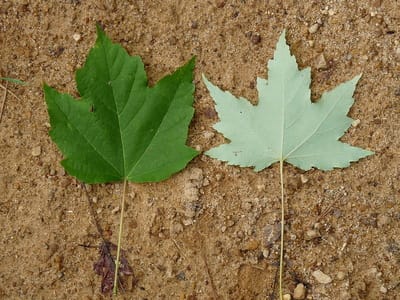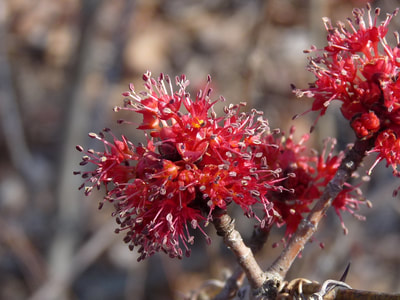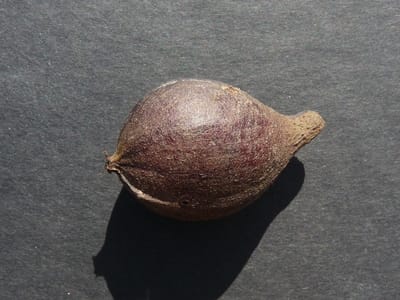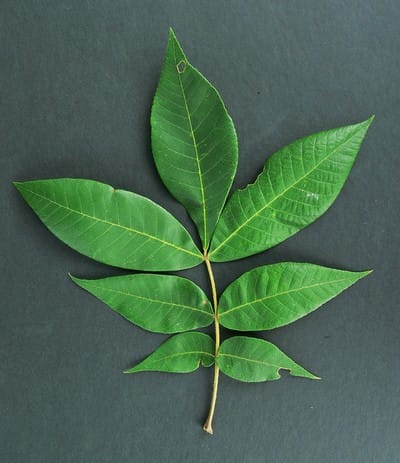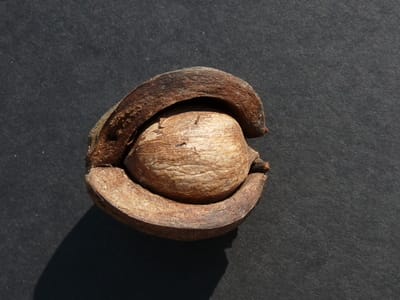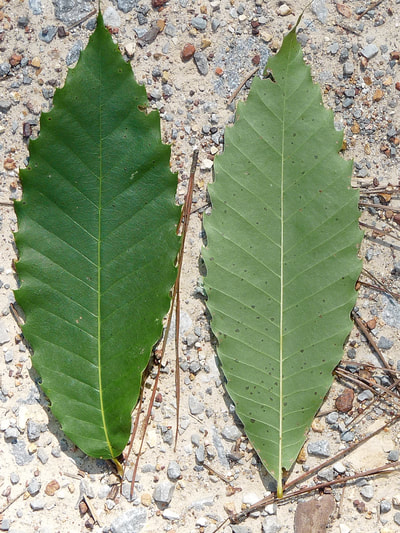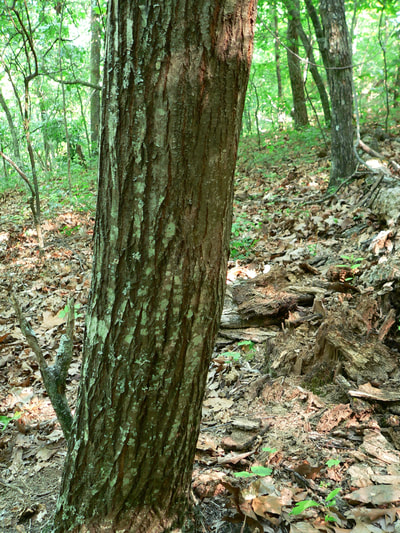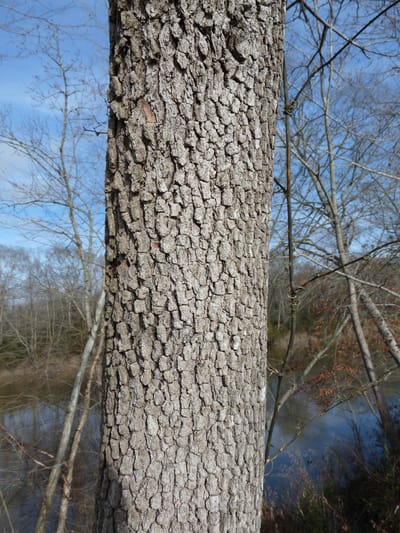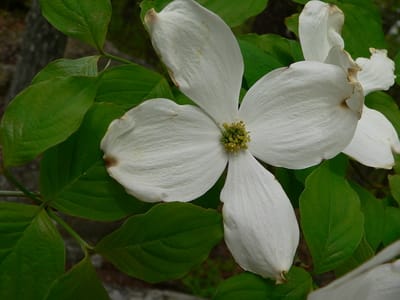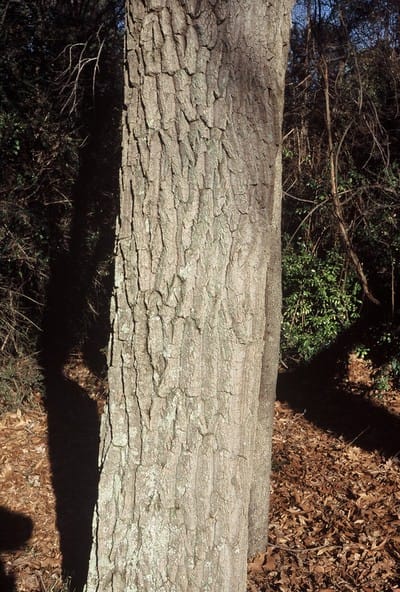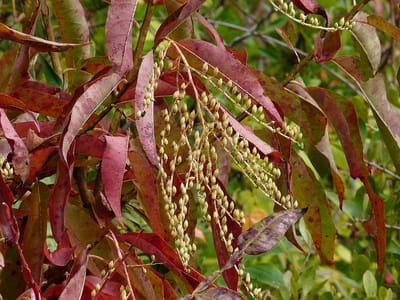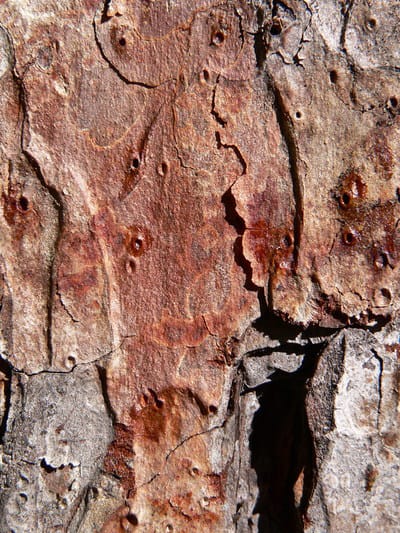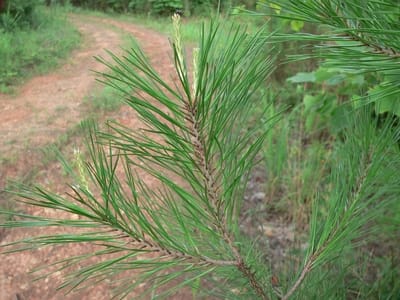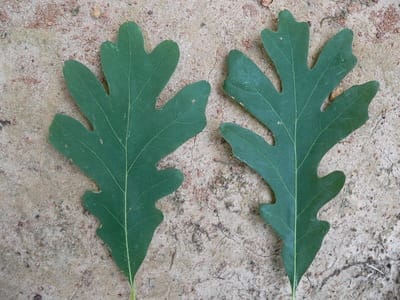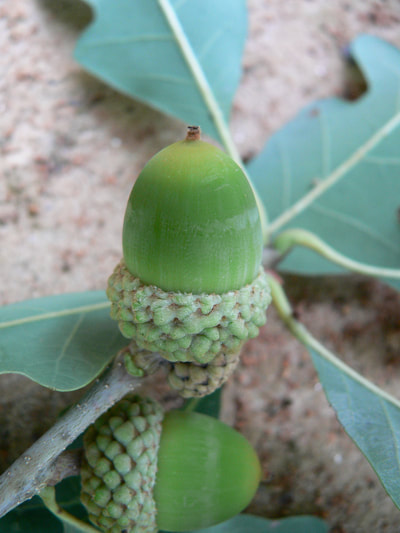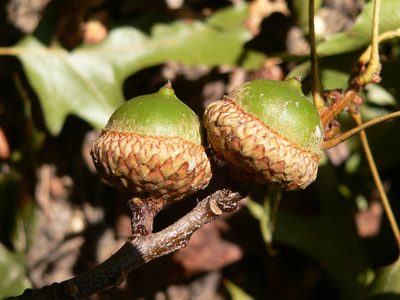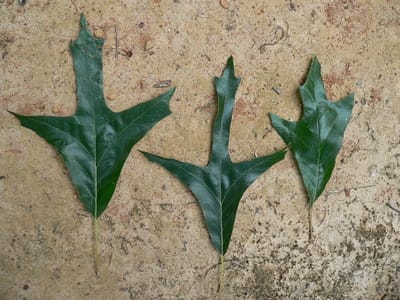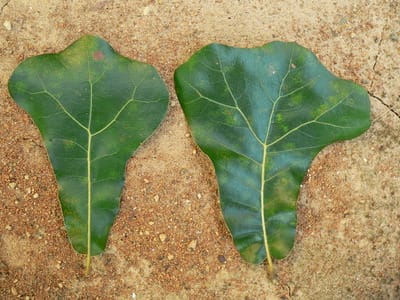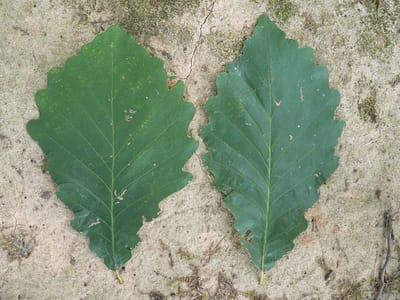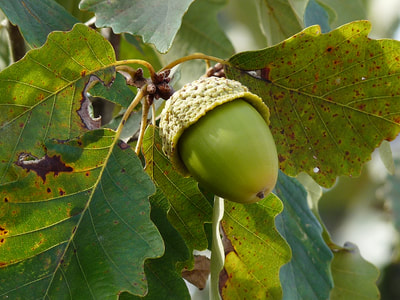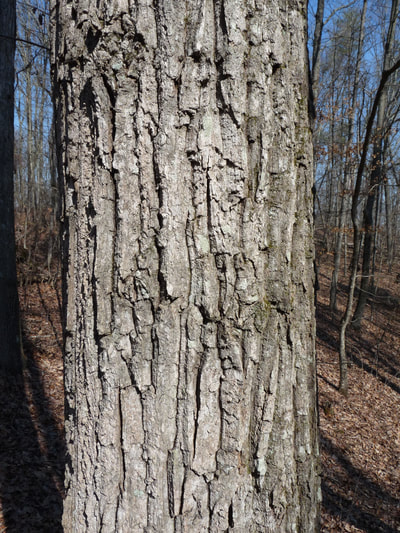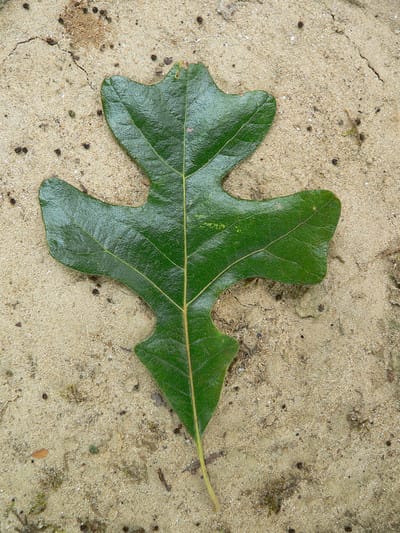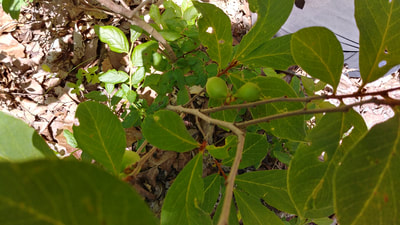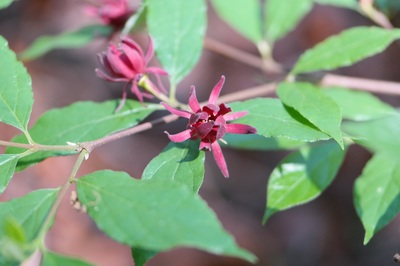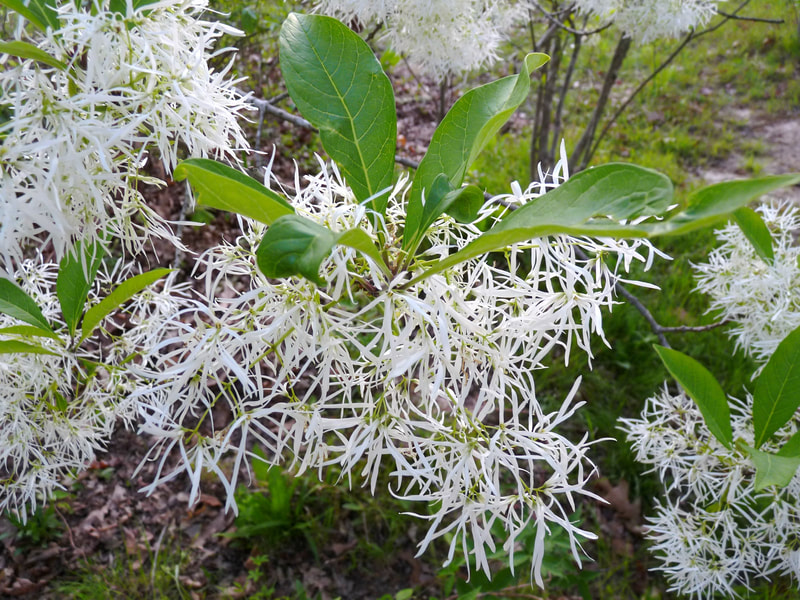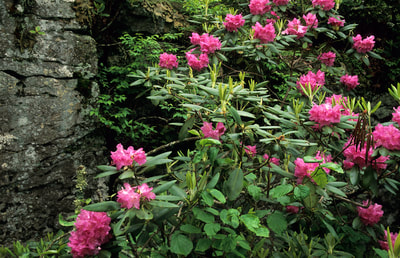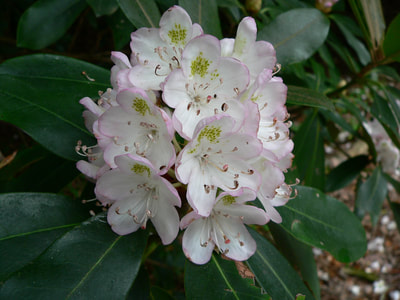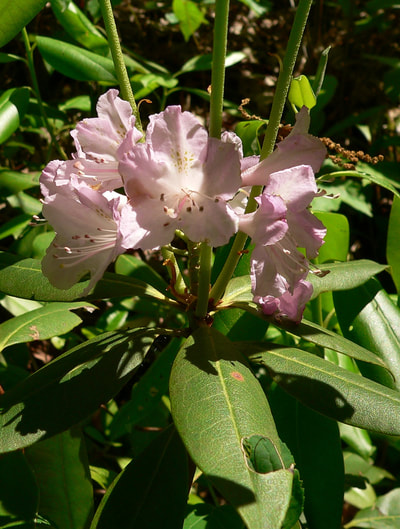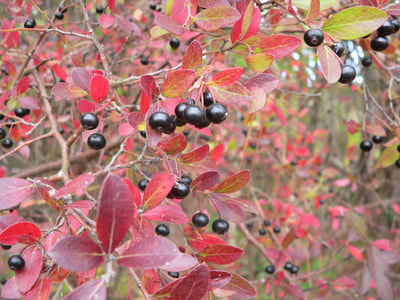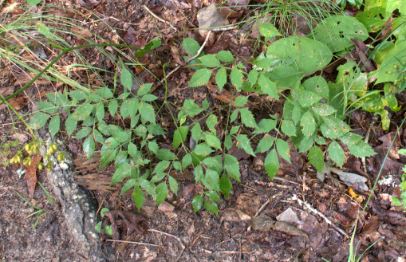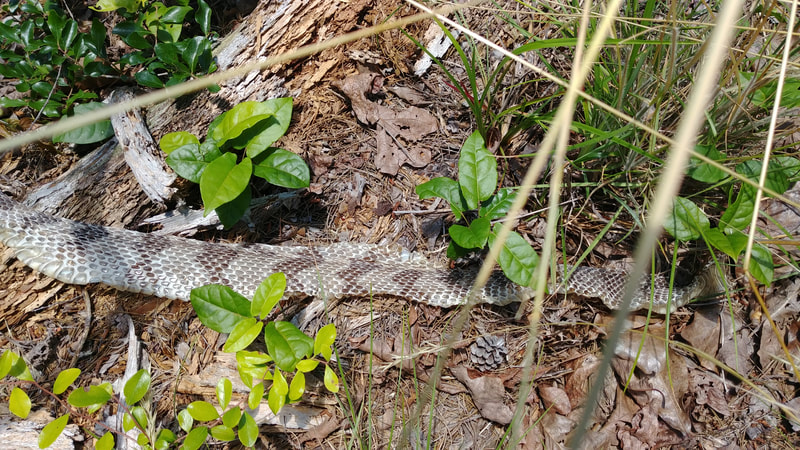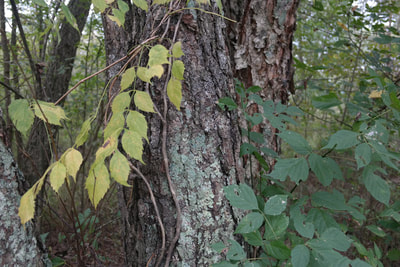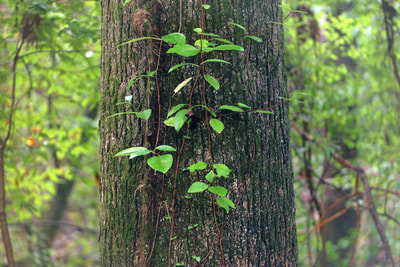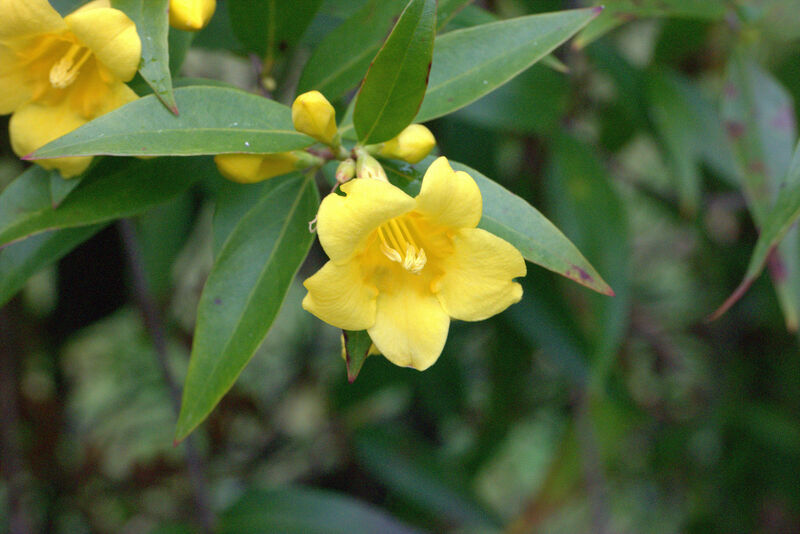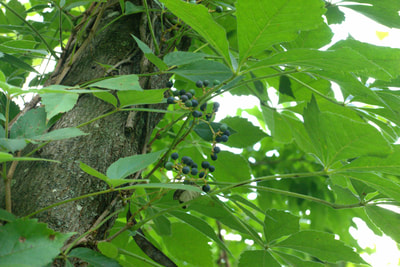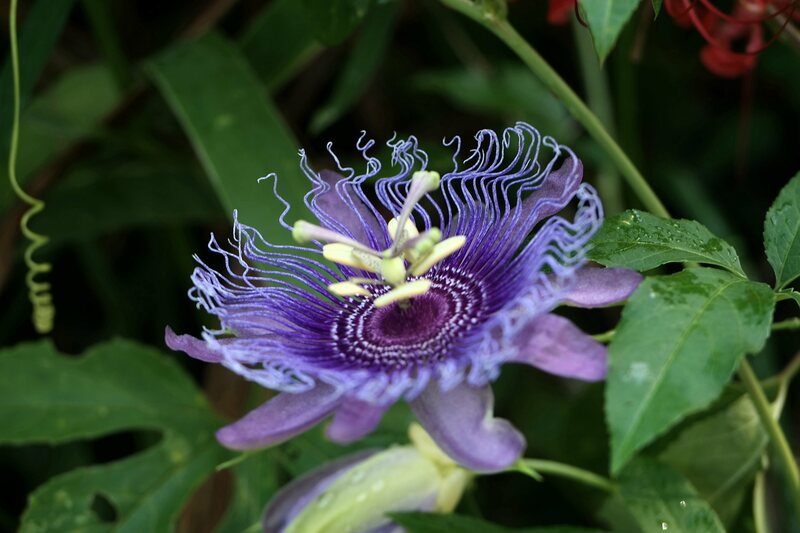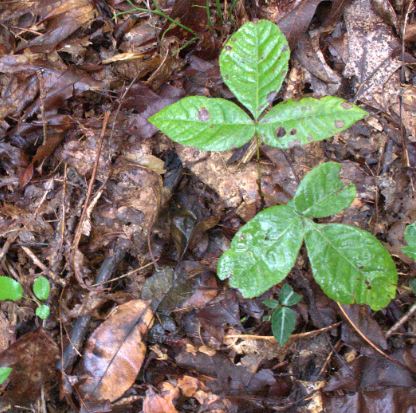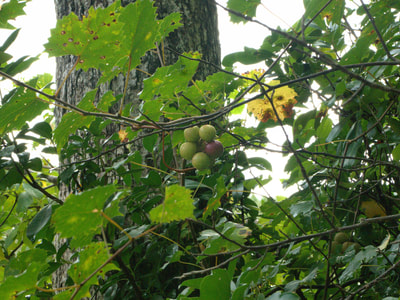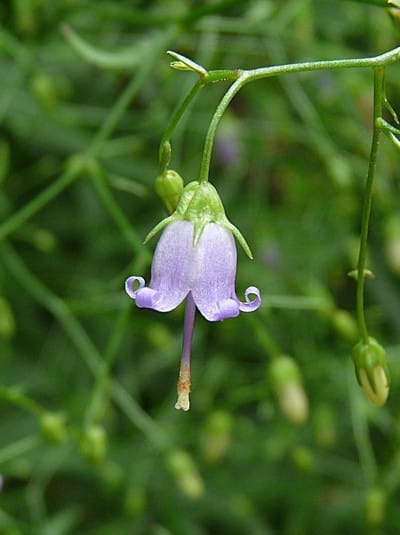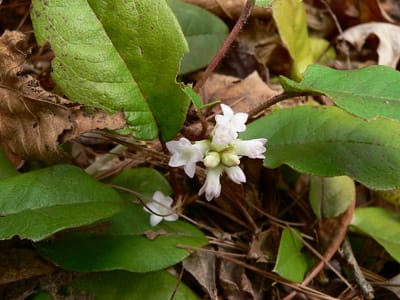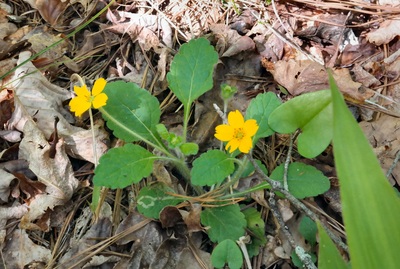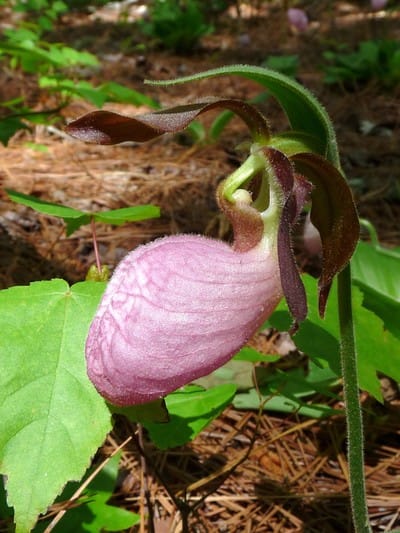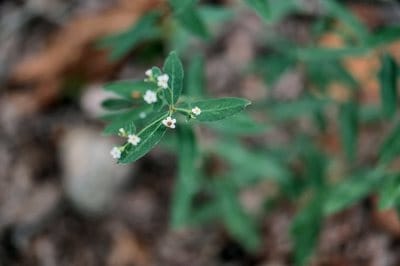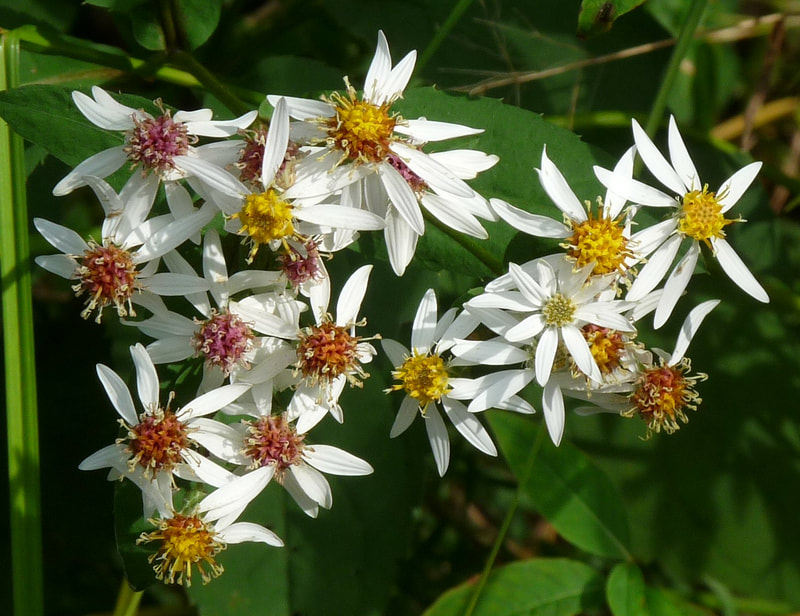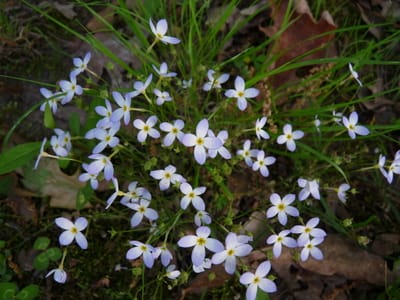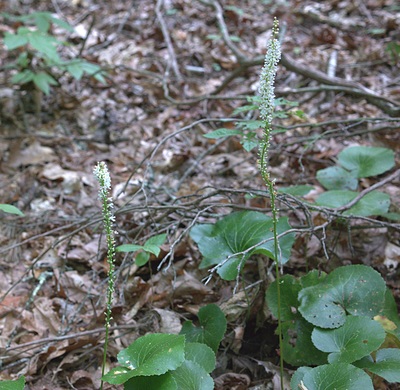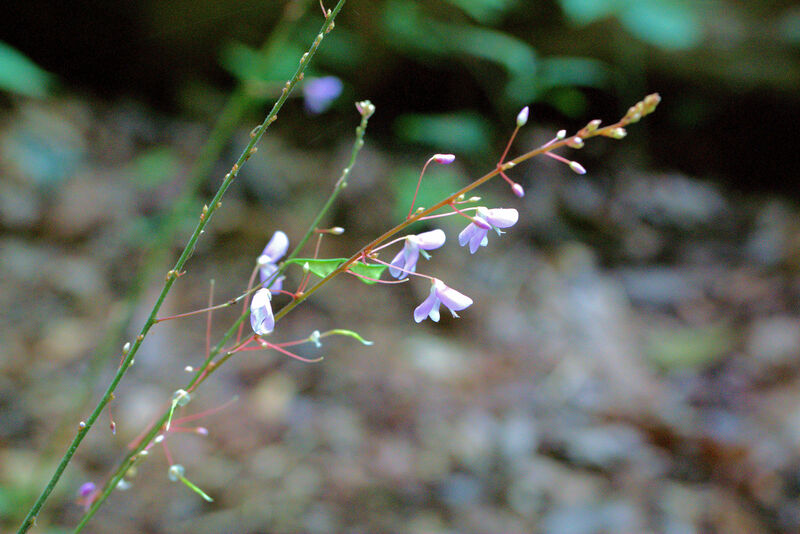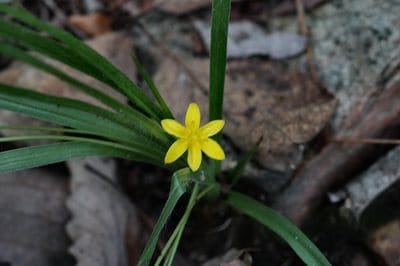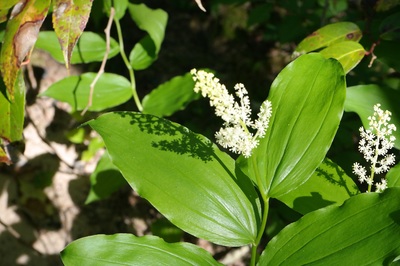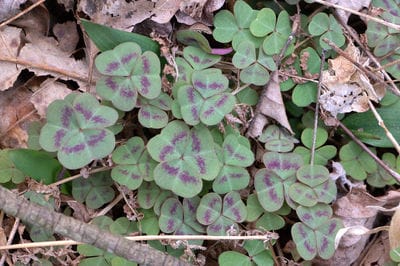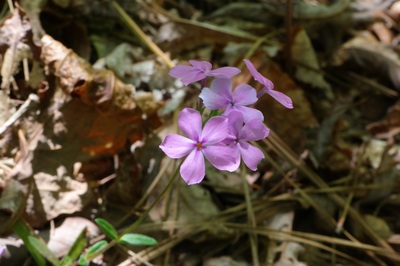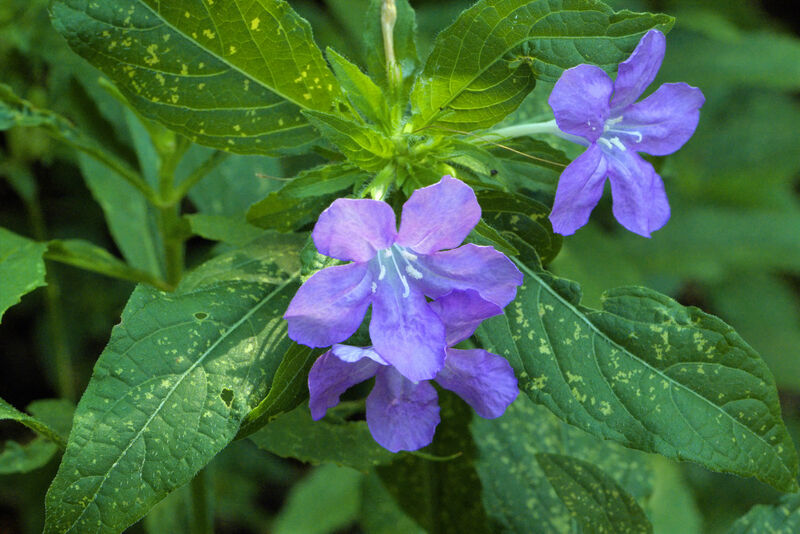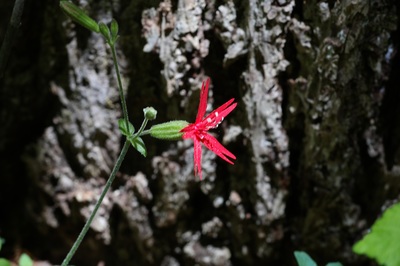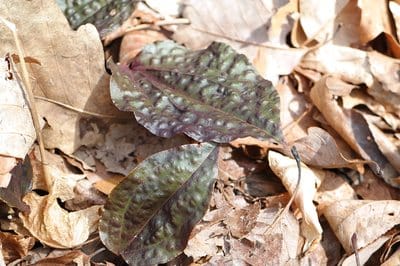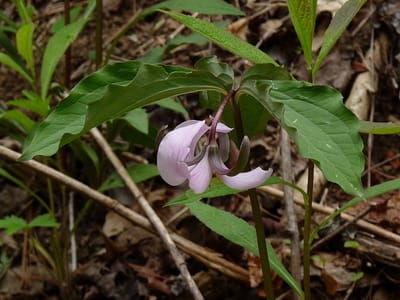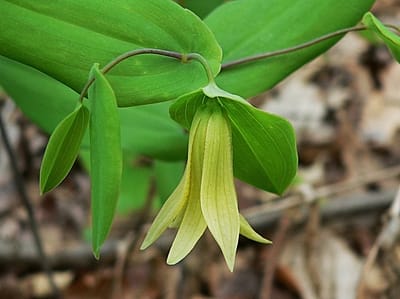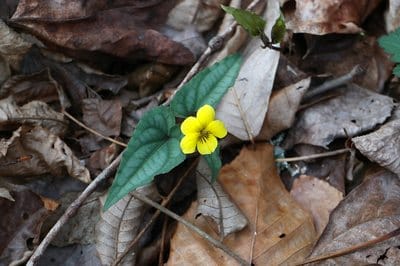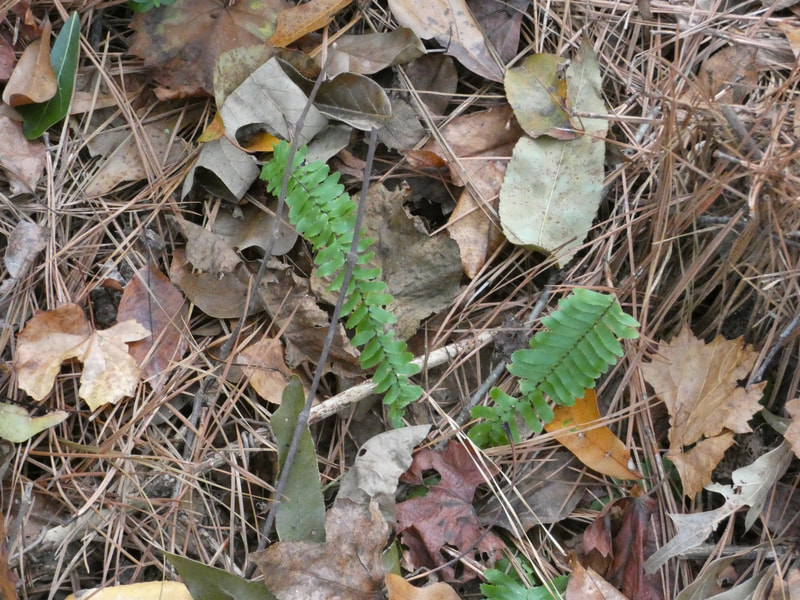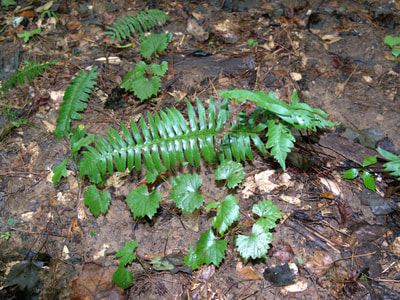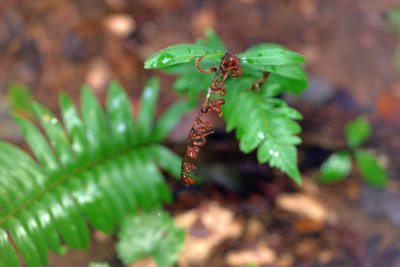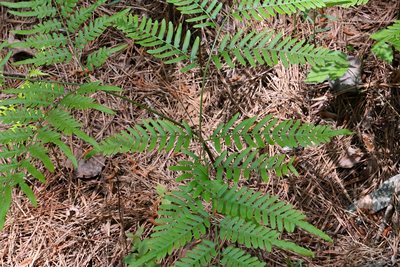Cumberland Plateau/Ridge & Valley Acidic Oak Forests
|
Acidic oak forests are hardwood forests, often mixed with pine, that grow in very to somewhat dry soils. They occur over rocks, that weather to fairly acidic, and often sandy or rocky soils, such a sandstone, chert, conglomerate, and some shales. These rocks often form ridgetops, so the high, exposed landscape position amplifies the effects of the thin, fast-draining soils. Oaks, pines, hickories, black gum and red maple form the canopy. As with most acidic communities, shrubs in the heath family, including blueberries, mountain laurel, Catawba rhododendron, and azaleas are often common. These forests can be large patch.
|
|
Indicator and representative species: Rock chestnut oak, white oak, southern red oak, black oak, scarlet oak, sand (pale) hickory, mockernut hickory, pignut hickory, shortleaf pine, Virginia pine, black gum, persimmon, blueberries, Catawba rhododendron, and mountain laurel.
What's special: These forests provide acorns, hickory nuts, and blueberries for wildlife. They are beautiful in the fall, where blue skies contrast with fall leaf color. Huge embedded sandstone and conglomerate rock outcroppings add a spectacular element at Zahnd Tract and Rock Town.
Related communities: As fire frequency or rocky soils increase, this community grades into Pine-Oak woodlands. Acidic glades and cliffs are sometimes embedded within this community.
|
Plants
Click on the plant names to see images. Plants are listed in order by scientific name. Trees Red Maple Acer rubrum Pignut hickory Carya glabra Pale/Sand hickory Carya pallida Mockernut hickory Carya tomentosa American chestnut (sprouts) Castanea dentata Redbud Cercis canadensis Flowering dogwood Cornus florida Sweetgum Liquidambar styraciflua Blackgum Nyssa sylvatica Sourwood Oxydendrum arboreum Shortleaf pine Pinus echinata Virginia pine Pinus virginiana Loblolly pine Pinus taeda White oak Quercus alba Scarlet oak Quercus coccinea Southern red oak Quercus falcata Blackjack oak Quercus marilandica Rock chestnut oak Quercus montana Post oak Quercus stellata Black oak Quercus velutina Black locust Robinia pseudoacacia Shrubs Small-flower pawpaw Asimina parviflora Sweetshrub Calycanthus floridus Fringe-tree Chionanthus virginicus Mountain laurel Kalmia latifolia Catawba rhododendron Rhododendron catawbiense Great rhododendron Rhododendron maximum Gorge rhododendron Rhododendron minus Sparkleberry Vaccinium arboreum Hillside blueberry Vaccinium pallidum Deerberry Vaccinium stamineum Mapleleaf viburnum Viburnum acerifolium Vines Crossvine Bignonia capreolata Trumpet vine Campsis radicans Climbing hydrangea Decumaria barbara Hairy southern bush-honeysuckle Diervilla rivularis Trailing arbutus Epigaea repens (a sub-shrub) Carolina jessamine Gelsemium sempervirens Coral honeysuckle Lonicera sempervirens Passion flower/May-pop Passiflora incarnata Virginia creeper Parthenocissus quinquefolia Greenbrier (whiteleaf/sawbrier) Smilax glauca Poison ivy Toxicodendron radicans Muscadine Vitis rotundifolia Ground Layer Wildflowers Harebell Campanula divaricata Pipsissewa Chimaphila maculata (a sub-shrub) Green-and-gold Chrysogonum virginianum Pink lady's-slipper Cypripedium acaule Whorled wild yam Dioscorea quaternata Elephant's-foot Elephantopus tomentosus Trailing arbutus Epigaea repens (a sub-shrub) Eastern flowering spurge Euphorbia corollata White wood aster Eurybia divaricata Galax Galax urceolata Downy rattlesnake-orchid Goodyera pubescens Little brown jugs Hexastylis arifolia Hairy sunflower Helianthus hirsutus Veiny hawkweed Hieracium venosum Quaker ladies Houstonia caerulea Naked tick trefoil Hylodesmum nudiflorum Common stargrass Hypoxis hirsuta Upland dwarf iris Iris verna Orange dwarf-dandelion Krigia biflora Carolina phlox Phlox carolina Silkgrass Pityopsis graminifolia Solomon's seal Polygonatum biflorum Solomon's plume Maianthemum racemosum Violet wood-sorrel Oxalis violacea Carolina petunia Ruellia caroliniensis Fire-pink Silene virginica Sweet/licorice goldenrod Solidago odorata Cranefly orchid Tipularia discolor Catesby's trillium Trillium catesbaei Perfoliate bellwort Uvularia perfoliata Grasses Common hairgrass Avenella flexuosa Ferns Ebony spleenwort Asplenium platyneuron Christmas fern Polystichum acrosticoides Bracken fern Pteridium latisculum |
Representative Trees in order by scientific name
Representative Shrubs in order by scientific nameRepresentative Vines, in order by scientific name
Representative Wildflowers, in order by scientific nameRepresentative ferns
|

